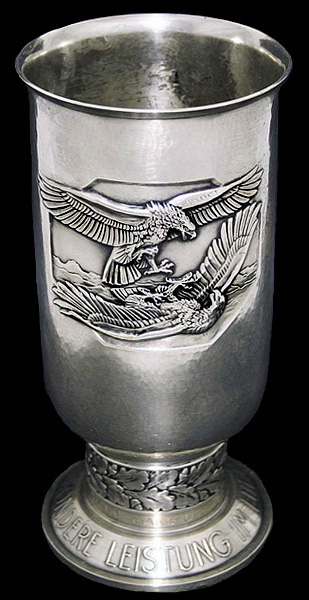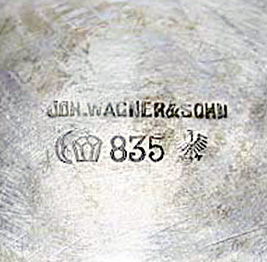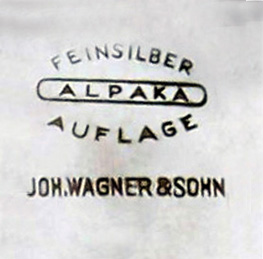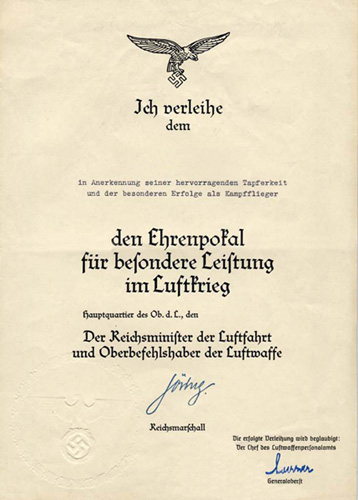Luftwaffe Goblet of Honour
(Ehrenpokal für Besondere Leistung im Luftkrieg)


Instituted on the 27th February 1940 by Hermann Göring, the Honour Goblet (Ehrenpokal) was intended for flying personnel only and was awarded for "Outstanding Achievements in the Air-War." The goblet was designated for individuals who had already received the Iron Cross, 1st and 2nd class, but did not merit the German Cross in Gold or Knight’s Cross of the Iron Cross.
Funding for the production of the goblet was supplied by the German Aviation Industry and the contract given to the sole maker, "Johann Wagner & Sohn" of Berlin. Wagner produced early examples of the goblet in 835 silver.

Early maker mark found on 835 silver examples
As the war progressed and high-grade materials became scarce a process of "Alpaka" silver-plating was used.

Later maker mark found on 'Alpaka' plated examples
The goblet measures 20.3cm high. The obverse shows two eagles engaged in aerial combat, while the reverse bears the 1939 Iron Cross , both in high relief. The stem is adorned with oak leaves and directly below the oak leaf pattern the recipient's rank, name and date of award were engraved. The base has the legend “FÜR BESONDERE LEISTUNG IM LUFTKRIEG” in raised lettering.

Citation (urkunde) for the Honour Goblet

A winner of the Honour Goblet on the day of the presentation
On the 10th December 1944, an order was issued by Generaloberst Bruno Loerzer stating that the Honour Goblet was no longer to be awarded to Luftwaffe personnel. In its place the recipient would receive the Roll of Honour Clasp of the Luftwaffe (Ehrenblattspange der Luftwaffe).

Roll of Honour Clasp of the Luftwaffe
(Ehrenblattspange der Luftwaffe)

